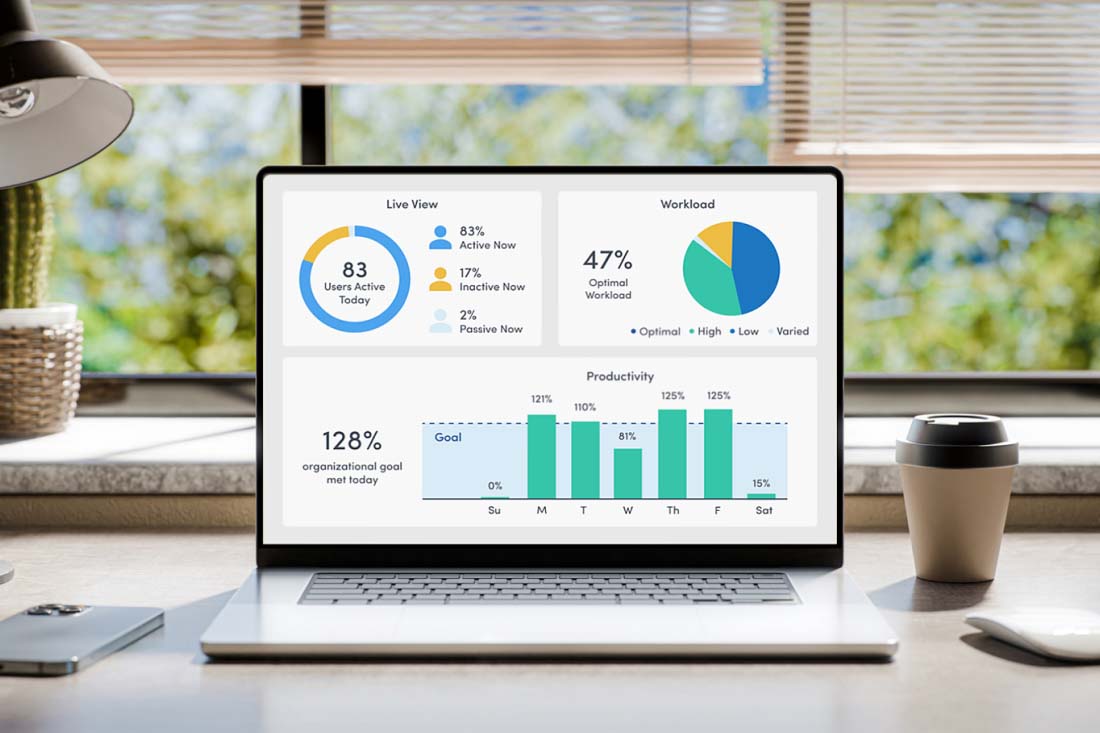Burnout is more than just a buzzword. In fact, burnout is recognized by the World Health Organization (WHO) as a diagnosable condition that is the result of “chronic workplace stress that has not been successfully managed.” This can lead to feelings of exhaustion, disinterest and reduced performance.
Basically, burnout is real.
It’s no surprise that employee burnout has become so prevalent in our society. Employees today are working longer hours and work is happening more frequently outside the traditional 9am-5pm window.
Recently, ActivTrak’s Productivity Lab looked at 53 million data points collected daily across 5 million employees’ working hours to determine how these hours are shifting. We found that as hours increased last year, schedules also changed. In fact, more than 78% of people work outside of typical hours and 56% log in to get work done on the weekend.
With lines increasingly blurred between workdays and time off—or even just time away from a computer—burnout is on the rise. So how can managers recognize and prevent employee burnout before it’s too late? By leveraging a data-informed view of employee activity trends.
Indicators of Employee Burnout
The old paradigm of “seeing” teams in the office to understand how they’re doing and what they’re working on has changed with hybrid work. For this reason, it’s become increasingly important for organizations to tap into the benefits of performance and productivity metrics to get a better picture of what employees are doing and how they’re feeling.
There are four primary indicators that can help:
- Employee Activity Trends—This shows up as significant changes in work activity trends, including time spent on digital tasks vs. collaborative time vs. focus time. Seeing a shift in where and how time is spent can indicate a change in employee engagement.
- Employee Engagement—This often presents as a decreased level of participation in meetings. It can also show up as a lack of interest in training and/or development opportunities. This behavior may signal a change in employee commitment.
- Employee Productivity—This shows up as a reduction in focus time on critical projects, or sometimes as an increase in missed deadlines. This behavior may require investigation into underlying inhibitors.
- Employee Turnover—This is a broader trend to watch for. With increases in attrition, and reduced interest in transfers and promotions, it could be an early warning sign of a deeper retention issue.
Leveraging a data-informed view of these indicators can help managers recognize signs of burnout before it impacts an employee’s performance.
How Data Helps Mitigate Employee Burnout
Data plays a critical role in making more informed decisions. This applies to employee performance, as well—providing opportunities for engagement and conversation around what’s working and what’s not.
Here’s how teams can use data to benefit employees and employers alike:
Collect and analyze productivity metrics.
Creating and working toward clearly defined goals and transparent productivity metrics can help teams spot changes in behavior quickly. Additionally, by pairing that data with employee sentiment analysis, managers can gain an even clearer picture of areas that need attention and work to make changes.
Encourage feedback and acknowledge pain points.
If data indicates burnout patterns on multiple fronts, managers can create opportunities for increased dialogue and employee input on ways to alleviate overwork situations. Sometimes, data may point to a bigger issue, like misalignment or disconnection. As work environments continue to evolve, organizations need to actively and visibly support improvement initiatives. This often starts with better communication and a greater focus on setting clear expectations.
Revisit and adjust policies.
A little flexibility can go a long way, especially after a year when few employees took time off, or may have discovered their most productive time is “after hours”. Recommending best practices, such as muting distracting notifications to encourage focus time, can help employees establish boundaries between work and life. But remember: To be most effective, leaders should model desired behaviors and leverage policies to nurture, not rebuke.
Key Takeaways
Preventing employee burnout is possible, and existing burnout can be identified and addressed if organizations listen and engage with their employees. Leveraging data-informed views of employee performance and productivity can go a long way toward not only recognizing burnout, but also mitigating it before it leads to bigger issues.
After a year that tested every traditional belief about how work should get done, it’s time for organizations to commit to working flexibly without ignoring the need for accountability. ActivTrak can help you easily understand if your team has healthy, productive work habits while avoiding the risk of burnout. Download our latest guide to learn more and get started.
About ActivTrak
ActivTrak helps companies unlock productivity potential. Our award-winning workforce analytics and productivity management software provides expert insights that empower people, optimize processes, and maximize technology. Additionally, with data sourced from more than 9,500 customers and over 450,000 users, ActivTrak’s Workforce Productivity Lab is a global center for ground-breaking research and expertise that helps companies embrace and embody the future of work.





